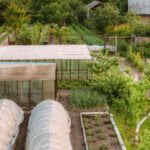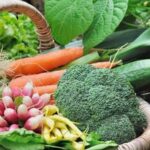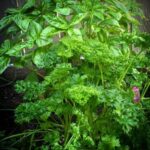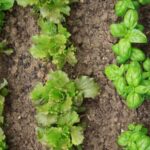As a gardener, you may have come across the term “Triple 16” fertilizer when looking for options to nourish your vegetable gardens. But is triple 16 good for vegetable gardens? Understanding this particular type of fertilizer and its benefits, drawbacks, application methods, and compatible crops is essential before incorporating it into your gardening routine.
Triple 16 fertilizer is a well-balanced blend that contains equal parts of nitrogen, phosphorus, and potassium – the three essential nutrients that plants need to thrive. This balanced composition makes it suitable for supporting the growth and development of various types of vegetables in your garden.
The nutrient composition of Triple 16 includes significant levels of nitrogen to promote strong vegetative growth, phosphorus for root development and flowering, and potassium for overall plant health and disease resistance. These nutrients are crucial for the successful cultivation of healthy and bountiful vegetable crops.
When considering using Triple 16 in your vegetable garden, it’s important to weigh the potential benefits against any drawbacks associated with its use. Additionally, understanding how to apply Triple 16 properly in your garden, which vegetables are best suited for its use, and alternative fertilizers available can help you make an informed decision about whether or not it is ideal for your specific gardening needs.
The Nutrient Composition of Triple 16
Triple 16 fertilizer, also known as 16-16-16 fertilizer, is a complete fertilizer that contains equal parts of nitrogen (N), phosphorus (P), and potassium (K). This balanced nutrient composition makes it a popular choice for vegetable gardens as it provides the necessary elements for healthy plant growth. The three primary macronutrients play different roles in plant development: nitrogen promotes leafy green growth, phosphorus supports root development and flowering, and potassium helps with overall plant health and disease resistance.
- Nitrogen (N): Nitrogen is essential for chlorophyll production, which is crucial for photosynthesis. This macronutrient stimulates vegetative growth, including the development of leaves and stems.
- Phosphorus (P): Phosphorus plays a key role in energy transfer within the plant, promoting root growth, flower formation, and fruiting. It also aids in seed formation.
- Potassium (K): Potassium helps regulate water uptake and improve the overall health of the plant. It also strengthens the plant’s resistance to diseases and environmental stresses.
When using Triple 16 fertilizer in vegetable gardens, it’s important to consider the specific nutrient needs of different crops. While some vegetables may benefit from the balanced NPK ratio of Triple 16, others may require adjustments to promote optimal growth. Understanding the unique nutritional requirements of various vegetable crops can help maximize the effectiveness of Triple 16 in a garden setting.
In addition to its balanced nutrient composition, Triple 16 fertilizer often contains secondary macronutrients such as calcium, magnesium, and sulfur. These elements contribute to overall soil fertility and can further enhance the growth and productivity of vegetable plants. However, careful application and monitoring are necessary to prevent nutrient imbalances or excessive buildup in the soil.
Benefits of Using Triple 16 in Vegetable Gardens
Improved Plant Growth and Development
Using Triple 16 in vegetable gardens provides a balanced supply of essential nutrients such as nitrogen, phosphorus, and potassium. These nutrients are crucial for the healthy growth and development of vegetable plants. Nitrogen promotes leafy growth, phosphorus supports root development, and potassium enhances overall plant health, disease resistance, and fruit quality.
Enhanced Yield and Quality of Vegetables
The use of Triple 16 fertilizer in vegetable gardens has been linked to improved yield and quality of vegetables. The balanced composition of this fertilizer ensures that the plants receive the necessary nutrients throughout their growing stages, leading to healthier and more abundant harvests. Additionally, the presence of phosphorus in Triple 16 can enhance fruit formation and improve the taste and texture of vegetables.
Sustainable Soil Fertility
Triple 16 fertilizer not only benefits the current crop but also helps maintain soil fertility for future growing seasons. The continuous application of this fertilizer can improve soil structure, increase microbial activity, and promote nutrient retention in the soil. This contributes to sustainable gardening practices by ensuring that the soil remains fertile and productive for years to come.
How to Apply Triple 16 in Vegetable Gardens
Triple 16 fertilizer should be applied to your vegetable garden according to the specific needs of the plants you are growing. As a general rule, you can apply the fertilizer by sprinkling it around the base of each plant, being cautious not to let the granules come in contact with the stems or leaves.
Avoid applying Triple 16 directly on wet foliage as this may cause burning. Make sure to water your garden after applying the fertilizer to help work it into the soil and activate its nutrients.
It is also important to follow the recommended application rates for Triple 16, as excessive use can result in nutrient imbalances and potential harm to your vegetable plants. Always read and adhere to the instructions provided on the fertilizer packaging regarding proper application.
| Application Method | Tips |
|---|---|
| Sprinkling around plant base | Avoid contact with stems/leaves; Water after application |
| Avoid direct application on wet foliage | To prevent burning and damage to plants |
| Adhere to recommended application rates | Prevent nutrient imbalances and potential harm to plants |
Potential Drawbacks of Using Triple 16 in Vegetable Gardens
Triple 16 fertilizer can be a great option for vegetable gardens due to its balanced nutrient composition and effectiveness in promoting plant growth. However, there are also potential drawbacks that gardeners should be aware of before using this type of fertilizer.
Some potential drawbacks of using Triple 16 in vegetable gardens include:
1. Environmental Impact: The high concentrations of phosphorus and nitrogen in Triple 16 can contribute to water pollution if not used properly. These nutrients can run off into waterways and cause algae blooms, which can harm aquatic ecosystems.
2. Nutrient Imbalance: While Triple 16 provides a balanced mix of nutrients, some vegetable crops may require different ratios of nutrients for optimal growth. This can lead to nutrient imbalances in the soil, affecting the overall health and yield of the plants.
3. Overfertilization: Using Triple 16 or any fertilizer excessively can lead to overfertilization, causing salt buildup in the soil and potentially burning the roots of vegetable plants. This can have negative effects on plant growth and overall crop health.
To mitigate these potential drawbacks, gardeners should consider:
– Testing soil regularly to monitor nutrient levels and adjust fertilizer application as needed.
– Utilizing organic fertilizers or compost to supplement the use of Triple 16 and provide a more diverse array of nutrients.
– Following recommended application rates and timing as indicated on the product label or by a professional agronomist for specific vegetable crops.
While there are potential drawbacks to using Triple 16 in vegetable gardens, with proper care and attention, these concerns can be minimized, allowing gardeners to reap the benefits of using this type of fertilizer for their vegetable crops.
Compatible Vegetable Crops for Triple 16
When considering the use of Triple 16 fertilizer in vegetable gardens, it is important to take into account the compatibility of this type of fertilizer with different vegetable crops. While Triple 16 can be beneficial for a variety of vegetables, some specific crops may benefit more from its nutrient composition than others.
One group of compatible vegetable crops for Triple 16 includes leafy greens such as lettuce, spinach, and kale. These vegetables require a balanced supply of nutrients, particularly nitrogen and potassium, which are present in Triple 16. The use of this fertilizer can help support healthy foliage growth and overall plant development in leafy green crops.
Another set of compatible vegetable crops for Triple 16 comprises root vegetables like carrots, beets, and radishes. These types of vegetables benefit from the phosphorus content found in Triple 16, which promotes strong root development and enhanced yield. By incorporating this fertilizer into the soil, gardeners can support the robust growth and quality of root vegetables in their gardens.
Furthermore, nightshade family crops such as tomatoes, peppers, and eggplants also thrive when using Triple 16 fertilizer. The balanced combination of nutrients provided by this fertilizer supports optimal fruit production and overall plant health in these types of vegetables. With the application of Triple 16, gardeners can expect improved yields and better quality fruits from their nightshade family crops.
| Vegetable Crops | Benefits With Triple 16 |
|---|---|
| Leafy Greens (lettuce, spinach, kale) | Supports healthy foliage growth |
| Root Vegetables (carrots, beets, radishes) | Promotes strong root development |
| Nightshade Family Crops (tomatoes, peppers, eggplants) | Optimal fruit production |
Tips for Maximizing the Effectiveness of Triple 16 in Vegetable Gardens
Proper Application Timing
Timing is crucial when it comes to applying Triple 16 in vegetable gardens. It is best to apply this fertilizer during the early stages of plant growth, as it provides the necessary nutrients for strong root development and overall plant health. Avoid applying Triple 16 during dry spells or excessive rainfall, as it may not be as effective in these conditions.
Uniform Distribution
To maximize the effectiveness of Triple 16, it is important to ensure uniform distribution of the fertilizer throughout the garden. Uneven application can lead to some plants receiving too much of certain nutrients, while others may not receive enough. This can result in uneven growth and potential nutrient deficiencies. Consider using a spreader or sprayer to evenly distribute Triple 16 across the entire garden area.
Maintain Proper Soil Moisture
In order for Triple 16 to work effectively, it is essential to maintain proper soil moisture levels. This fertilizer performs best in moist soil conditions, so be sure to water your vegetable garden regularly. However, avoid overwatering as it can lead to nutrient leaching and wastage of the fertilizer. Monitor your garden’s moisture levels and adjust watering accordingly for optimal results.
By paying attention to these tips for maximizing the effectiveness of Triple 16 in vegetable gardens, you can ensure that your plants receive the necessary nutrients for healthy growth and abundant yields.
Alternatives to Triple 16 for Vegetable Gardens
In conclusion, while Triple 16 fertilizer can be beneficial for vegetable gardens due to its nutrient composition and ease of application, it is important to consider alternative options as well. While Triple 16 may provide the necessary nutrients for some vegetable crops, it may not be the best choice for all types of vegetables.
Additionally, potential drawbacks such as the risk of over-fertilization and water pollution should be taken into account when deciding on the best fertilizer for your vegetable garden.
When considering alternatives to Triple 16 for vegetable gardens, it may be beneficial to explore organic fertilizers or other synthetic options that are specifically formulated for the needs of various types of vegetables. Organic fertilizers can offer a more sustainable and environmentally friendly option, while still providing essential nutrients for healthy plant growth. Other synthetic fertilizers with different nutrient compositions may also be better suited for specific vegetable crops, so it is important to research and consider all available options.
Ultimately, the decision on whether to use Triple 16 or an alternative fertilizer in a vegetable garden will depend on factors such as the specific needs of the plants being grown, environmental considerations, and personal preferences. By carefully weighing the benefits and drawbacks of each option, as well as considering compatibility with different vegetable crops, gardeners can make an informed decision that will promote healthy growth and maximize the yield of their vegetables.
Frequently Asked Questions
Is 16-16-16 Fertilizer Good for Vegetables?
16-16-16 fertilizer can be good for vegetables in some situations, but it really depends on the specific needs of the plants. This balanced ratio of nitrogen, phosphorus, and potassium can be beneficial for certain vegetable crops, as they typically need a well-rounded blend of nutrients to thrive.
However, it’s always best to conduct a soil test to determine the exact requirements of your garden before applying any fertilizer.
What Is the Best Fertilizer Ratio for Vegetable Gardens?
The best fertilizer ratio for vegetable gardens may vary depending on the specific needs of the plants and the existing nutrient levels in the soil. Generally, a balanced fertilizer ratio like 10-10-10 or 8-8-8 can work well as a general-purpose option for vegetable gardens.
However, again, conducting a soil test is crucial to accurately assess which nutrients are lacking and which fertilizer ratio would be most suitable for optimal growth.
Is 16-16-16 Fertilizer Good for Strawberries?
Using 16-16-16 fertilizer for strawberries can be effective in providing them with balanced nutrition, as this type of fertilizer contains equal parts nitrogen, phosphorus, and potassium. Strawberries generally benefit from a well-balanced blend of nutrients to support their growth and fruit production.
However, it’s important to monitor the pH levels of the soil as well as other factors that can affect the strawberries’ nutrient uptake when using any type of fertilizer.

If you’re looking to get into vegetable gardening, or are just looking for some tips on how to make your current garden better, then you’ve come to the right place! My name is Ethel and I have been gardening for years. In this blog, I’m going to share with you some of my best tips on how to create a successful vegetable garden.





